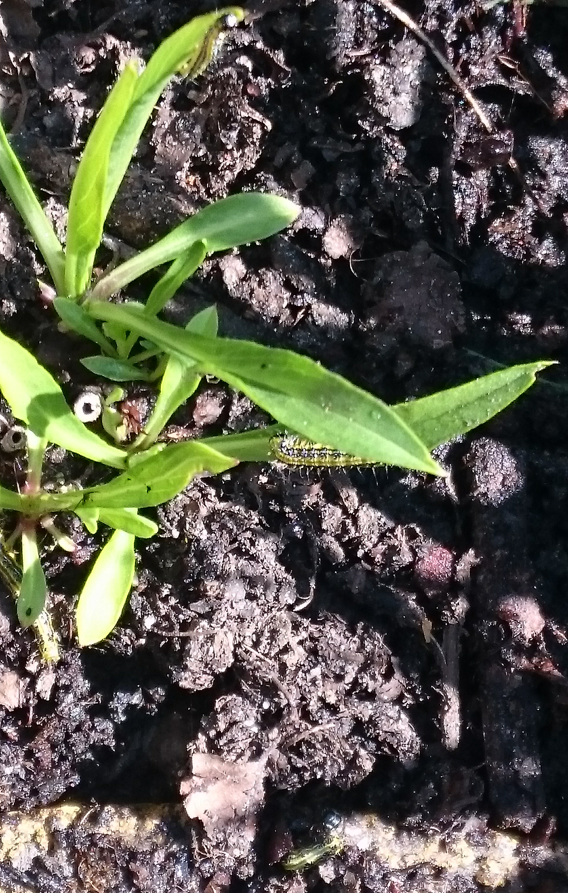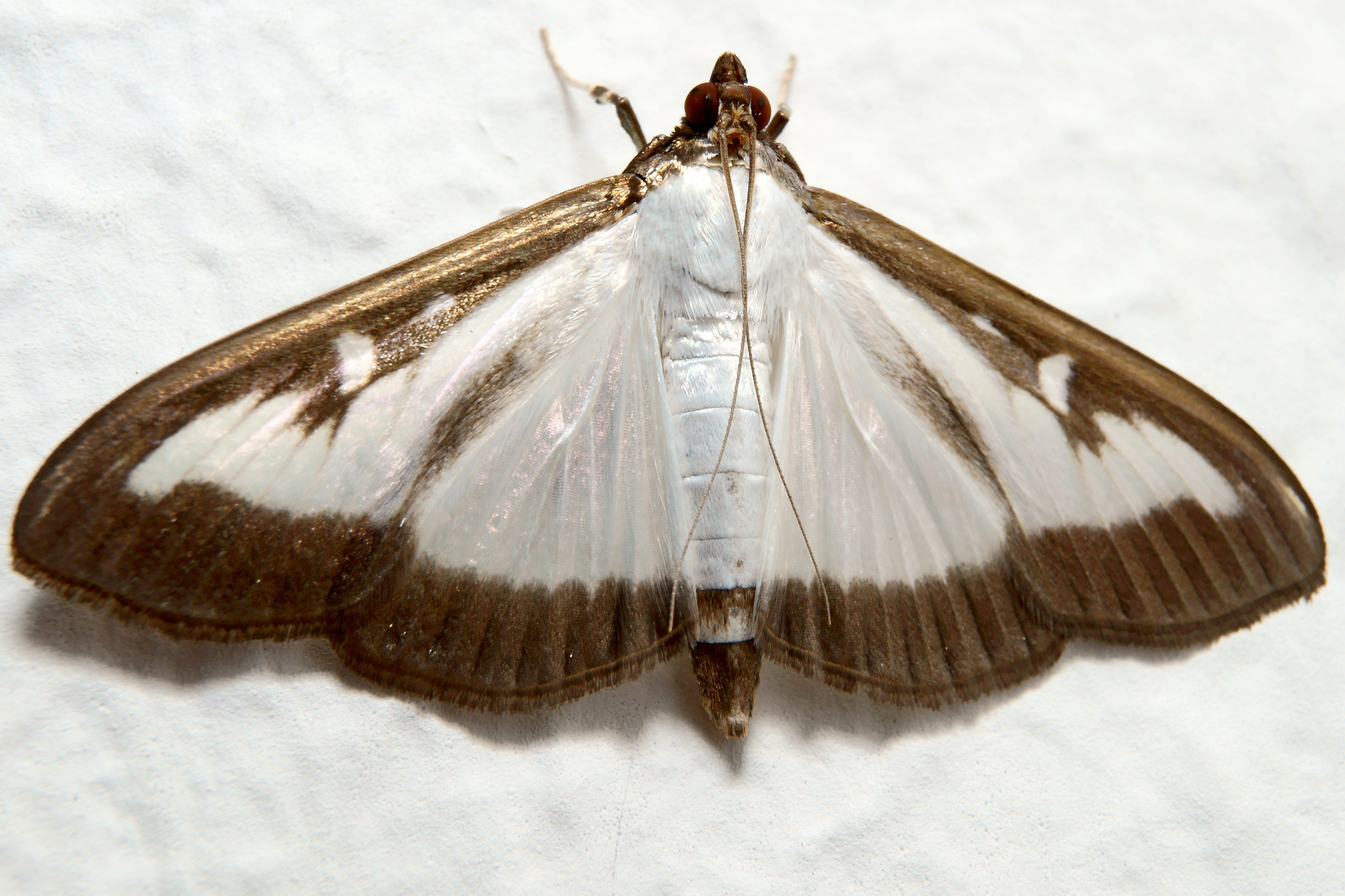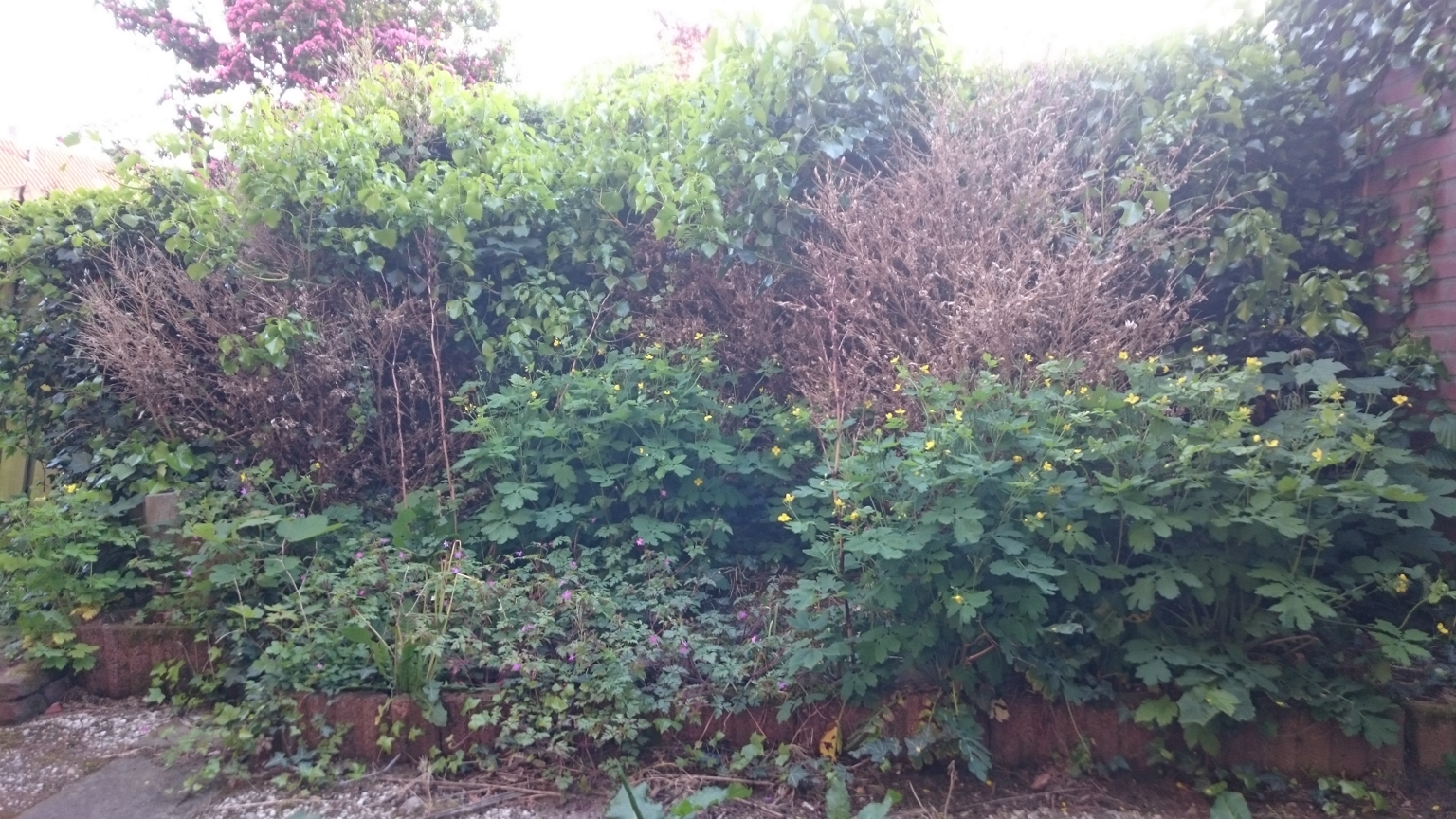Previous Page Archive Next Page
Box moth snacks - Sunday May 12th 2019
In my previous post I showed the box hedges that were eaten by the caterpillars of the box moth. Our shrubs were teeming with caterpillars - our whole front yard, actually. We could see them hanging on their silk from our front window. I took a picture of one of them to show what they look like - or so I thought. When I took a closer look at the picture, I saw that there are actually four (!) in that one shot.

The box moth is invasive in Europe and has been climbing up from central Europe to the Netherlands, and is wreaking havoc especially in the south and center of the country.
It's native to East Asia and apparently was accidentally shipped over to Europe. The moth had no natural enemies here (at first) and so many box shrubs have served as box moth dinner.
Our box shrubs were no exception, and many shrubs in other gardens in our neighbourhood were also eaten more or less bare.
The box moth itself is actually very pretty I think, with its golden sides and white feathery wings.

Image from Wikipedia made by Qflieger and licensed under the Creative Commons Attribution-Share Alike 3.0 Unported license
The shrubs can be saved by stepping in in time, and especially by not letting the shrubs be eaten two times in a row (like we did). After a month or two, new growth should appear. You can pick the caterpillars off by hand, or use a high-pressure cleaner to spray the caterpillars off and then collect them. There also are pheromone traps to catch male box mots. However, the best way I think to control the situation is to invite natural enemies of the box moth into our gardens.
Natural enemies have started to appear for the box moth caterpillars. Particularly, tits (meesjes) have taken a liking to the caterpillars, and feed them to their young as well. It is therefore particularly important to not control the pests with poison. The Dutch center for agriculture, and the bird protection organisation have started a large investigation of tit deaths. They are also asking for you to collect passed away tits if you find them for them to study.
We weren't attached to the box shrubs at all, so we decided to remove them completely. From the box shrubs branches I made supports for the annual flowers I'm currently sowing. I also made smaller sticks to pin down the anti-root foil on my raised beds, which works like a charm. I put the sticks I did not use yet in a bunch in the corner of my raised beds. However, this morning I saw a magpie fly off with one of them into a large tree behind our garden! At this point most of my stick collection has been confiscated.

Fortunately, there are still two large dead (eaten) box shrubs in the back of my garden which we will also take down, and then I can make new sticks outside of the nesting season...

Yes, we will have to deal with this mess eventually.